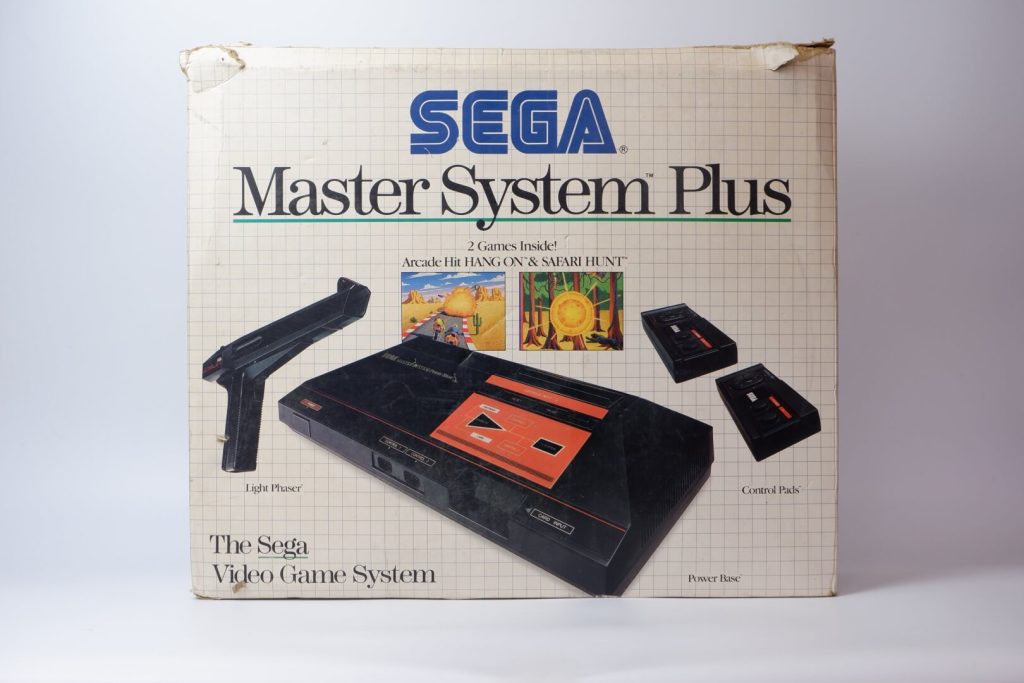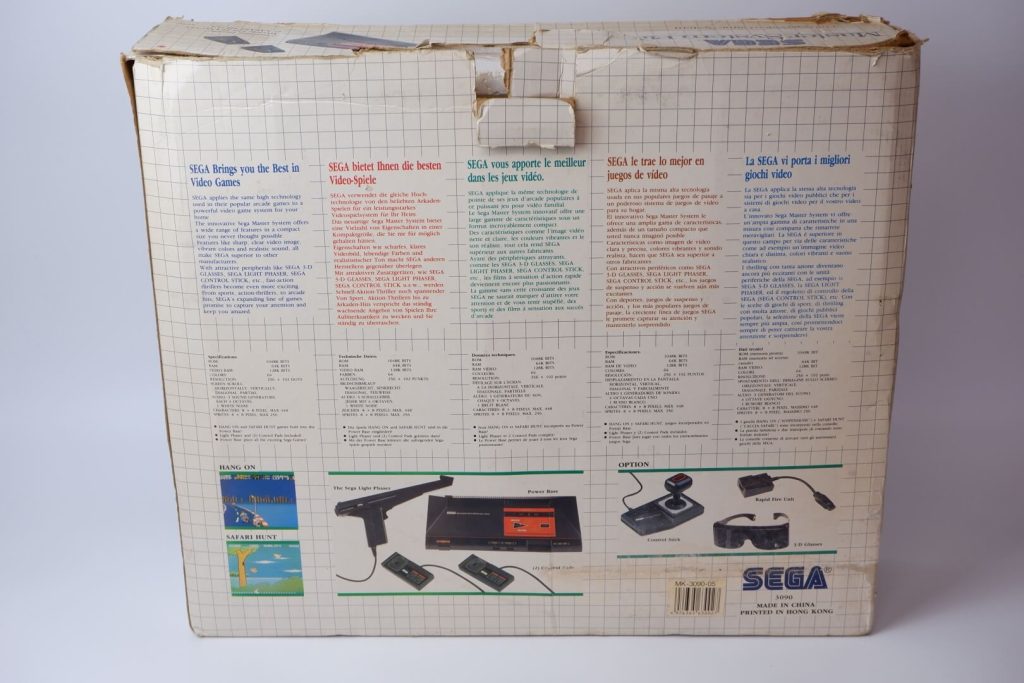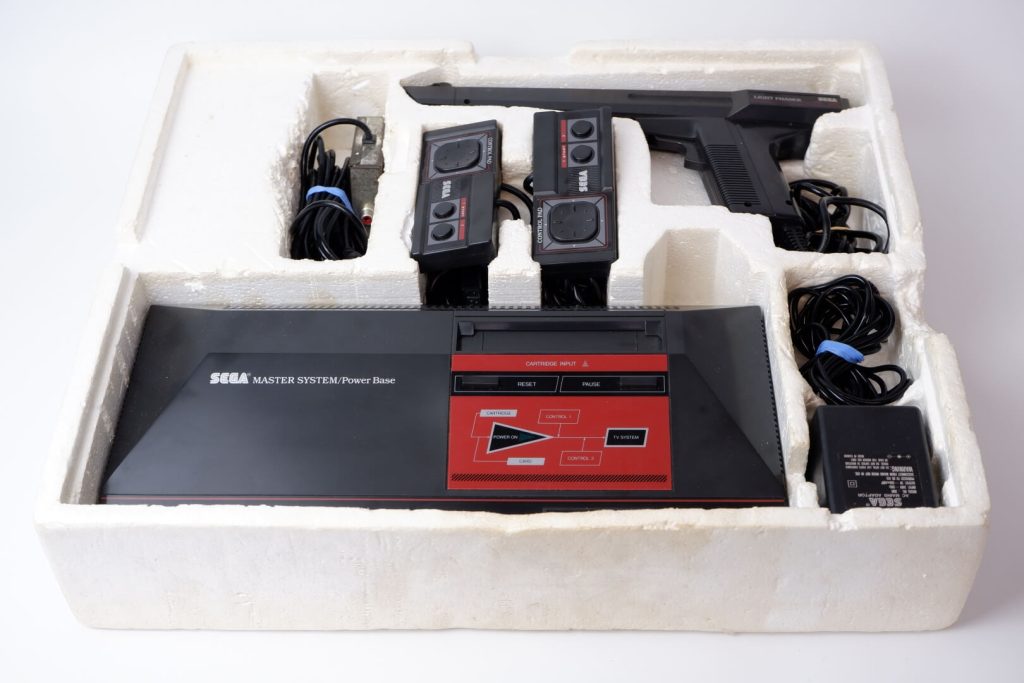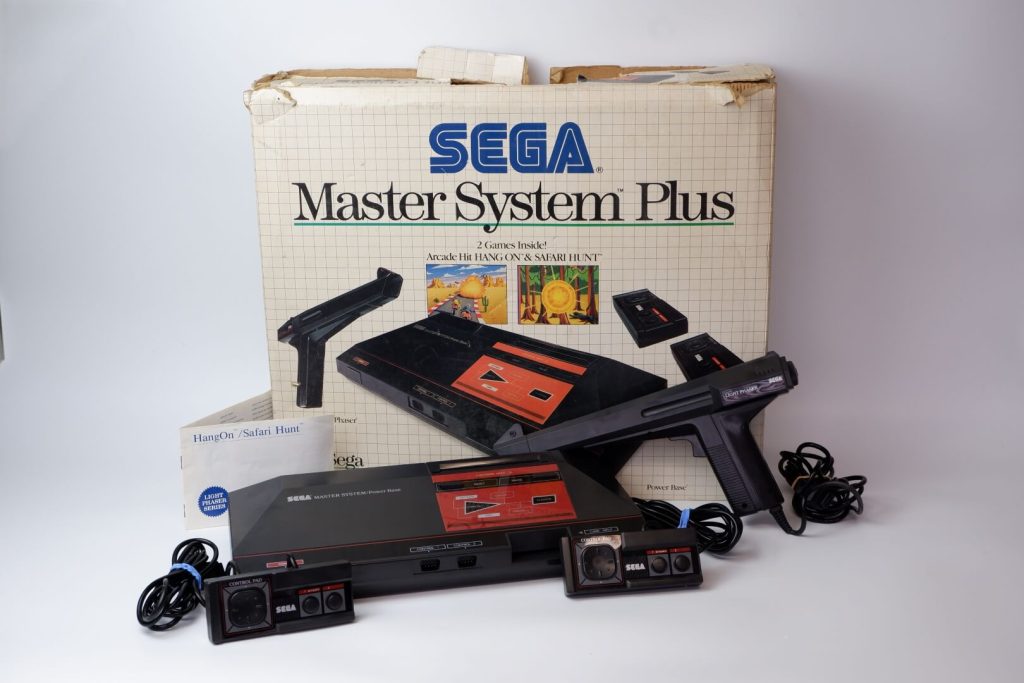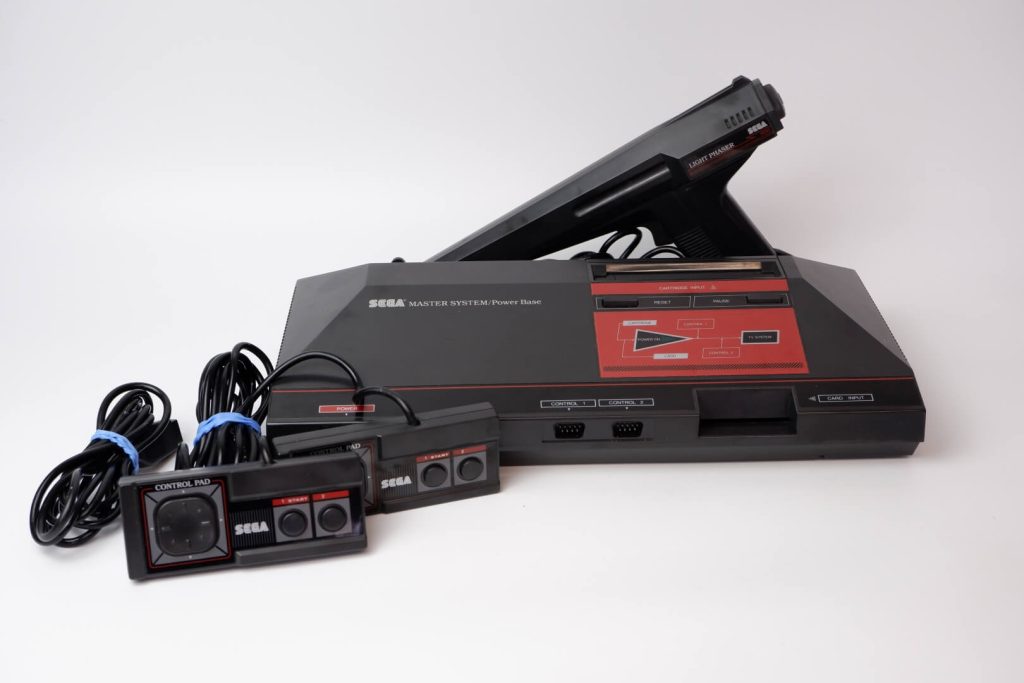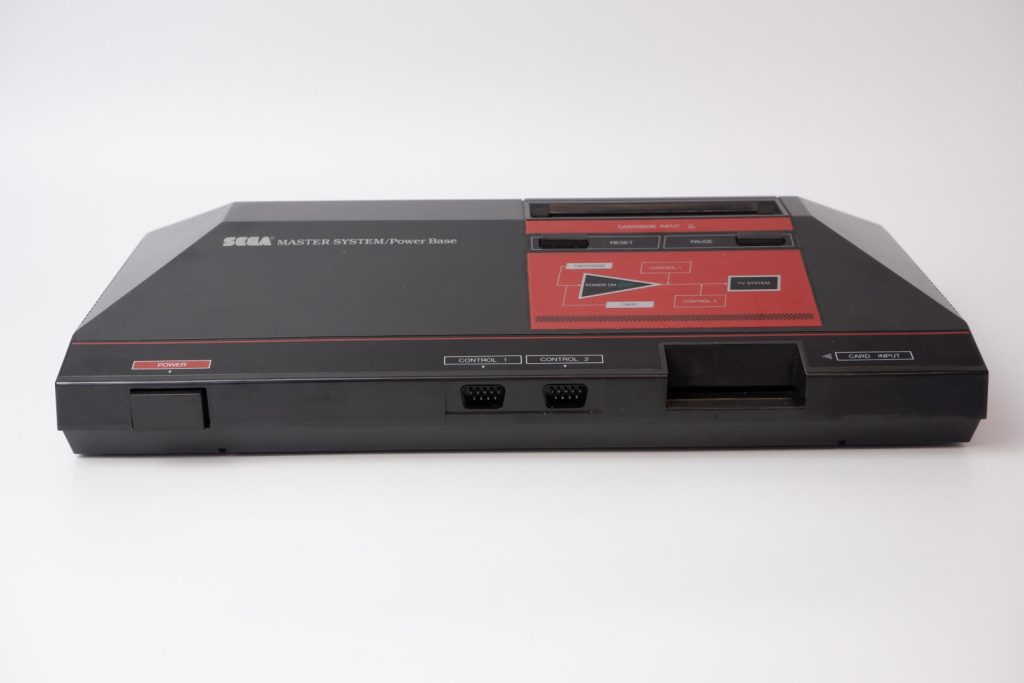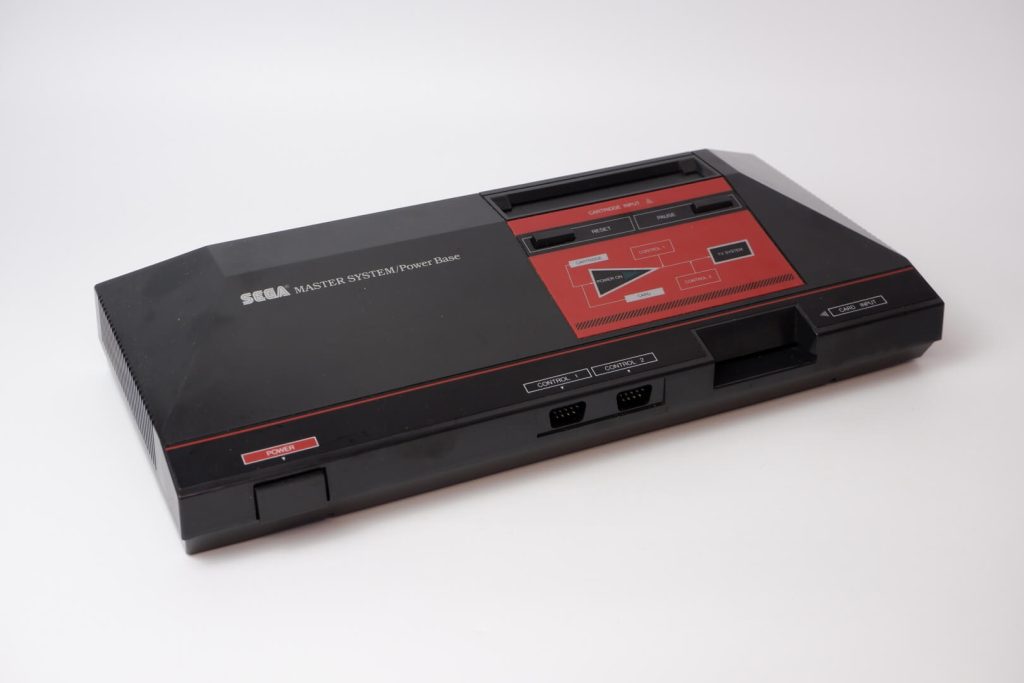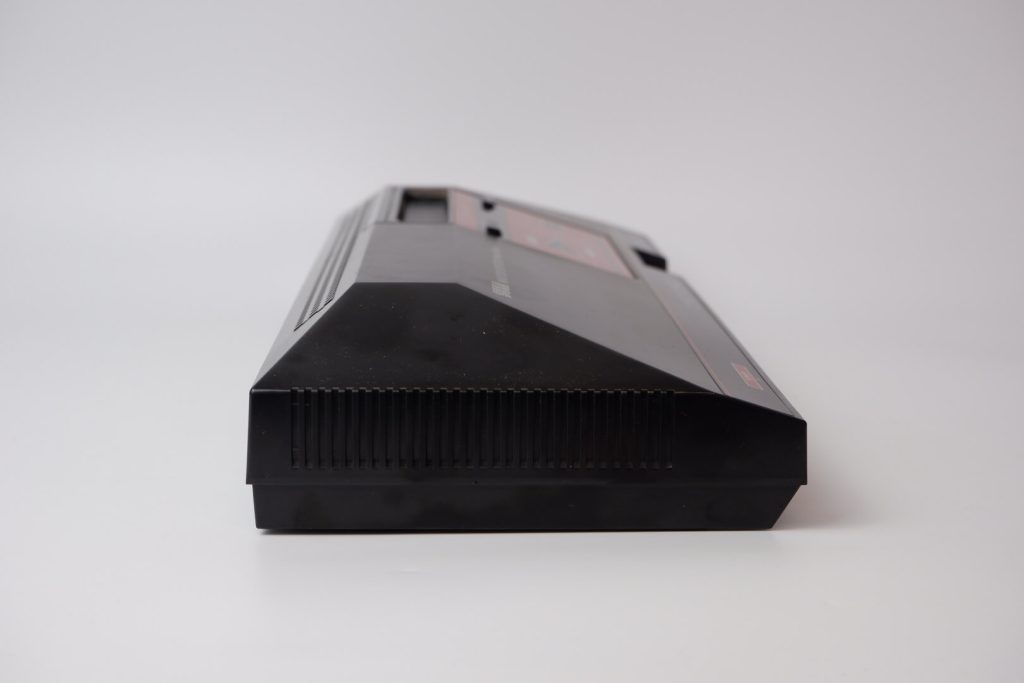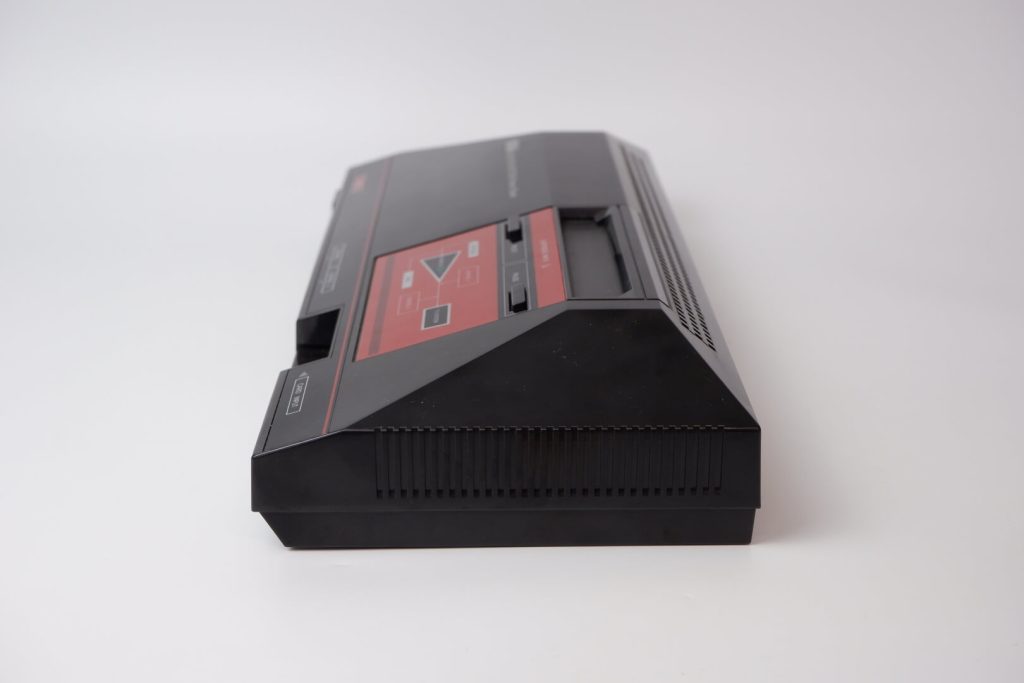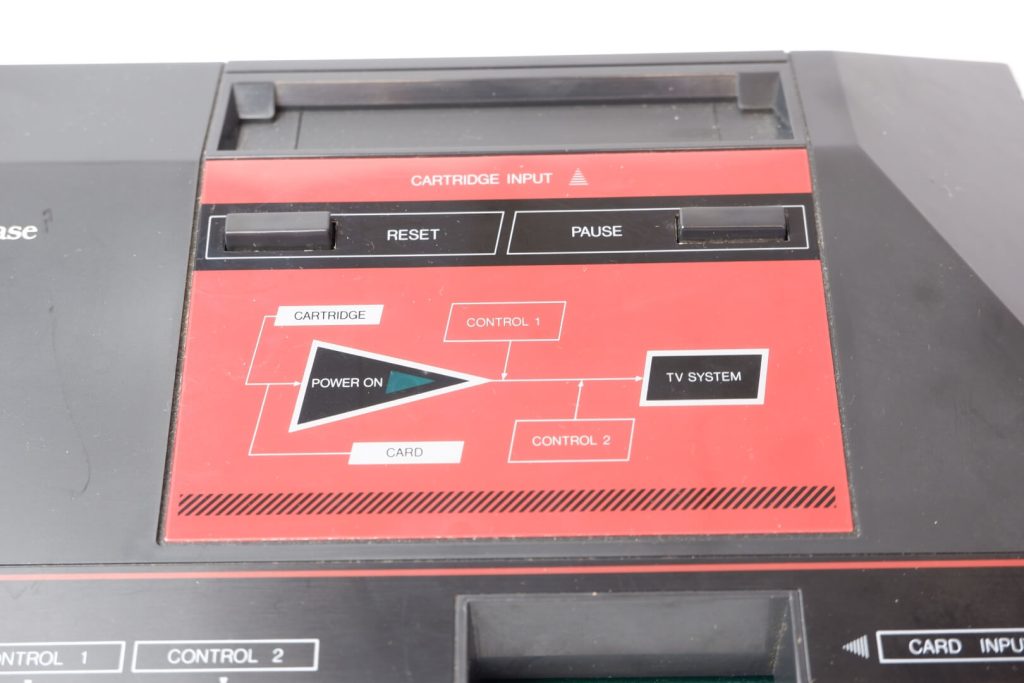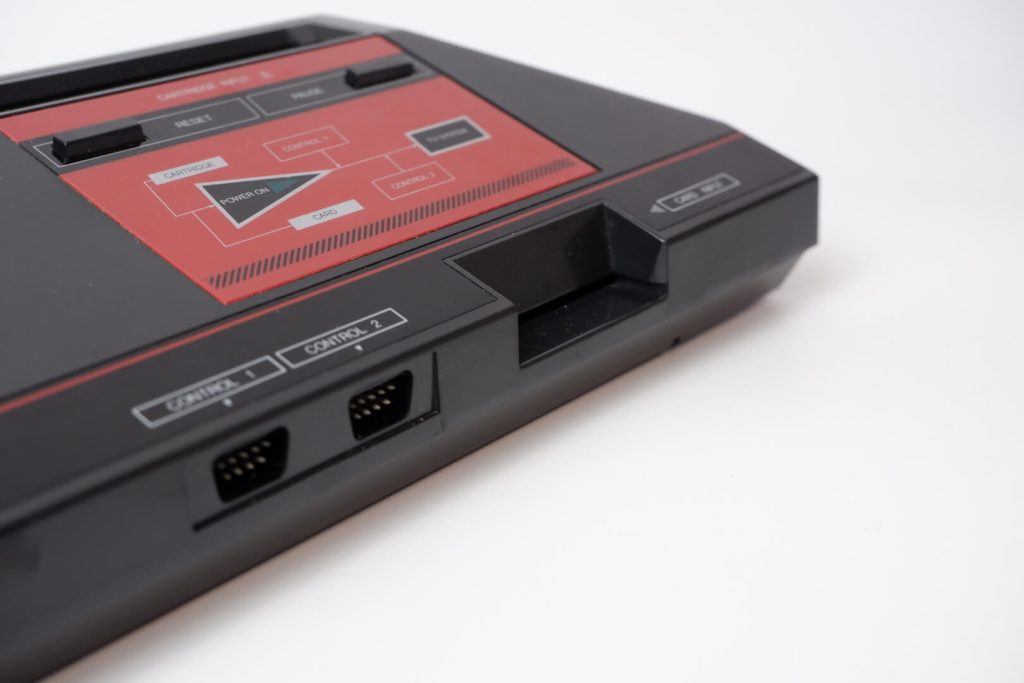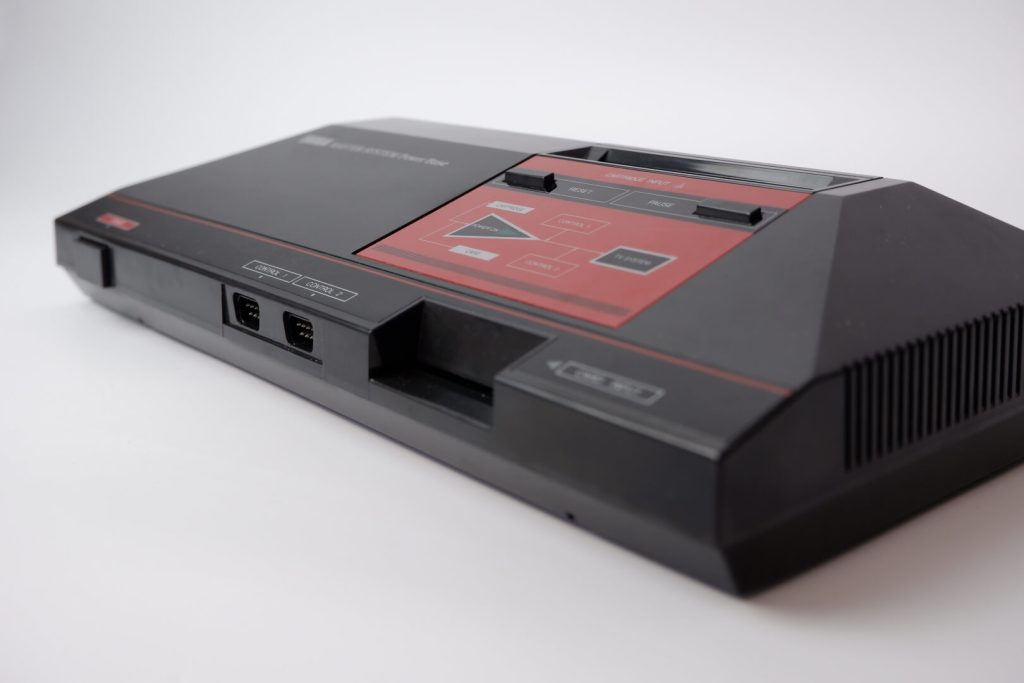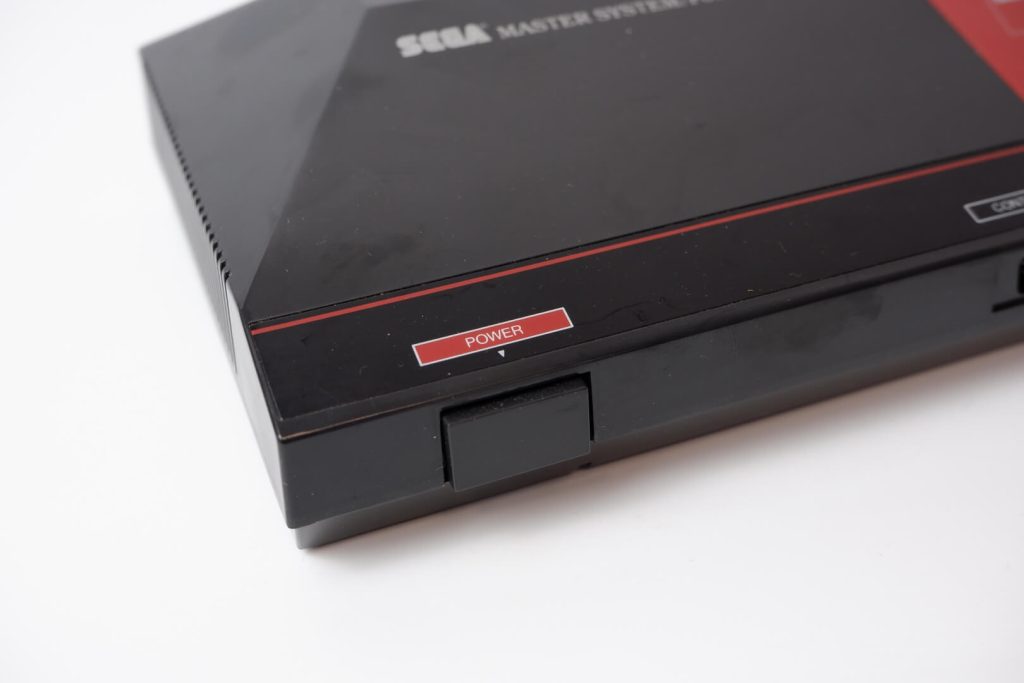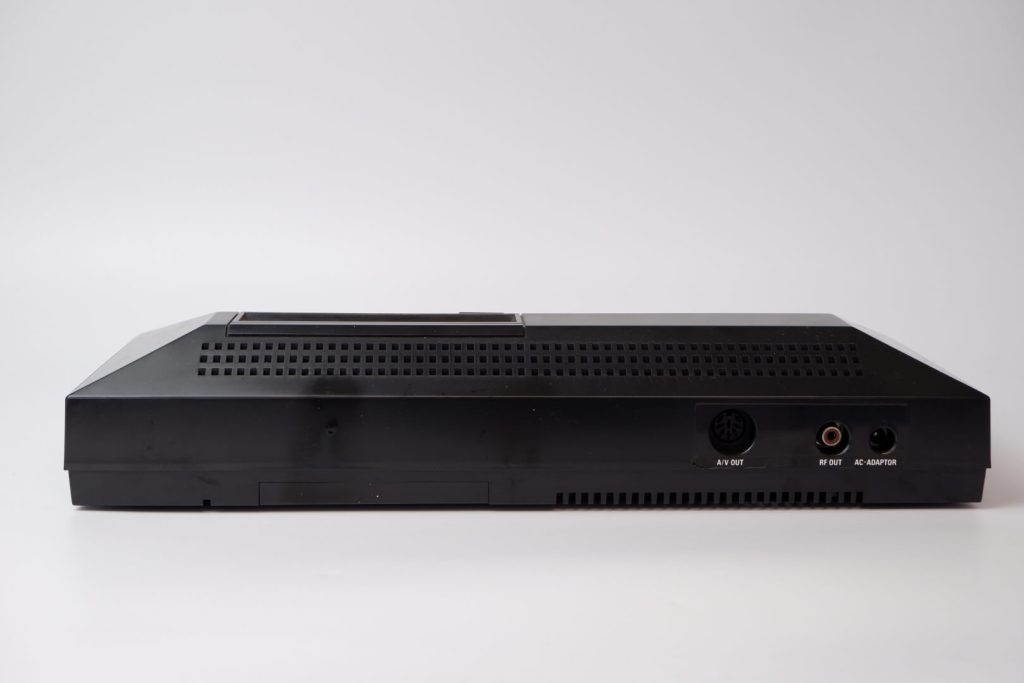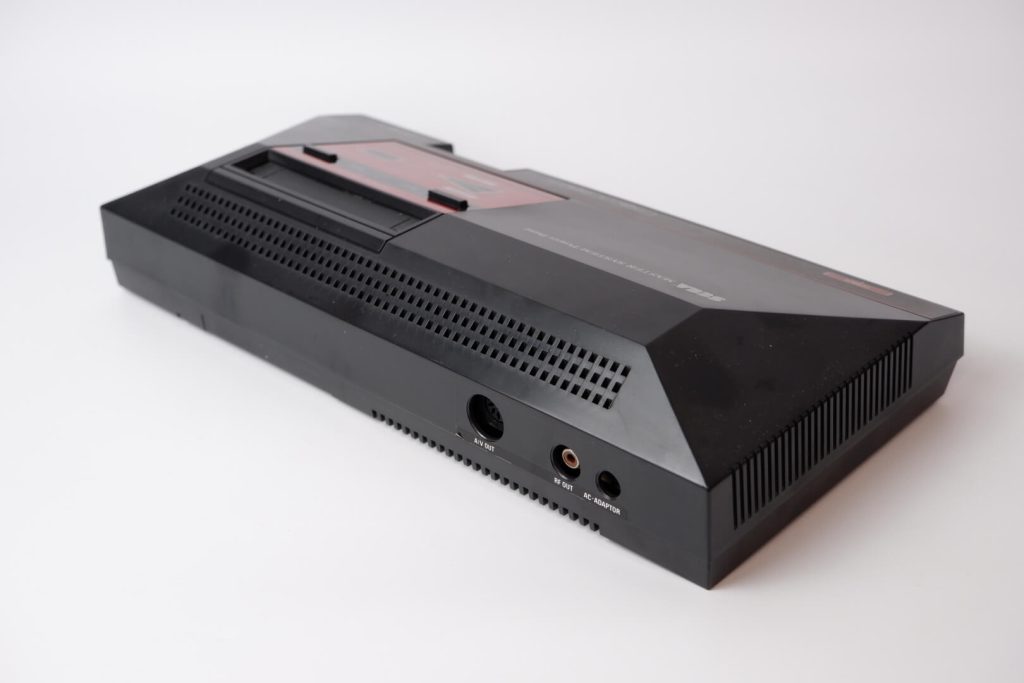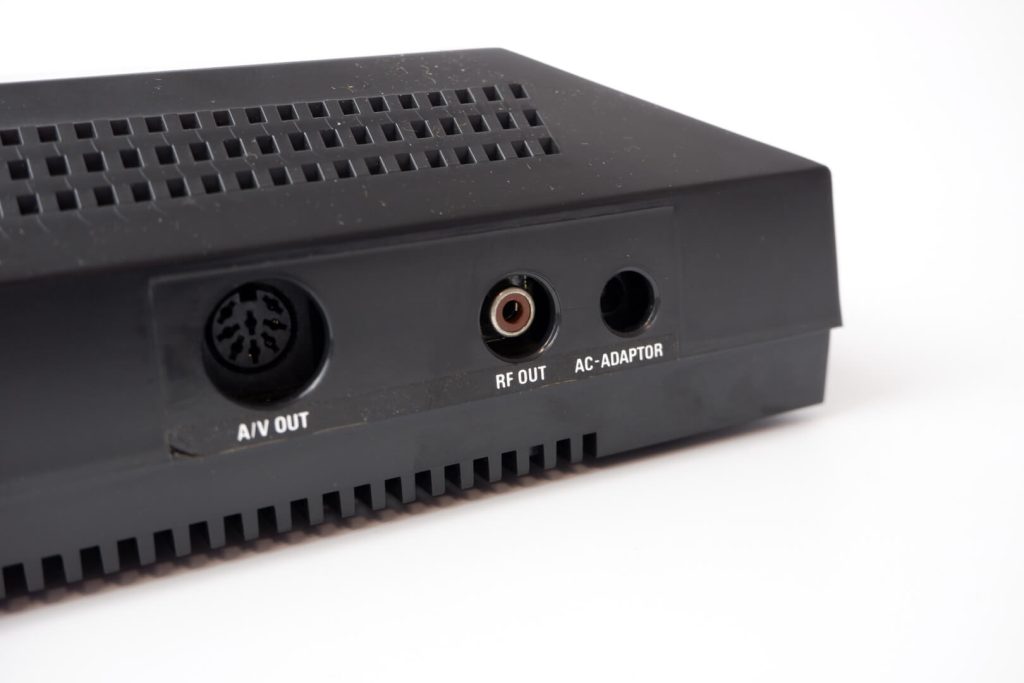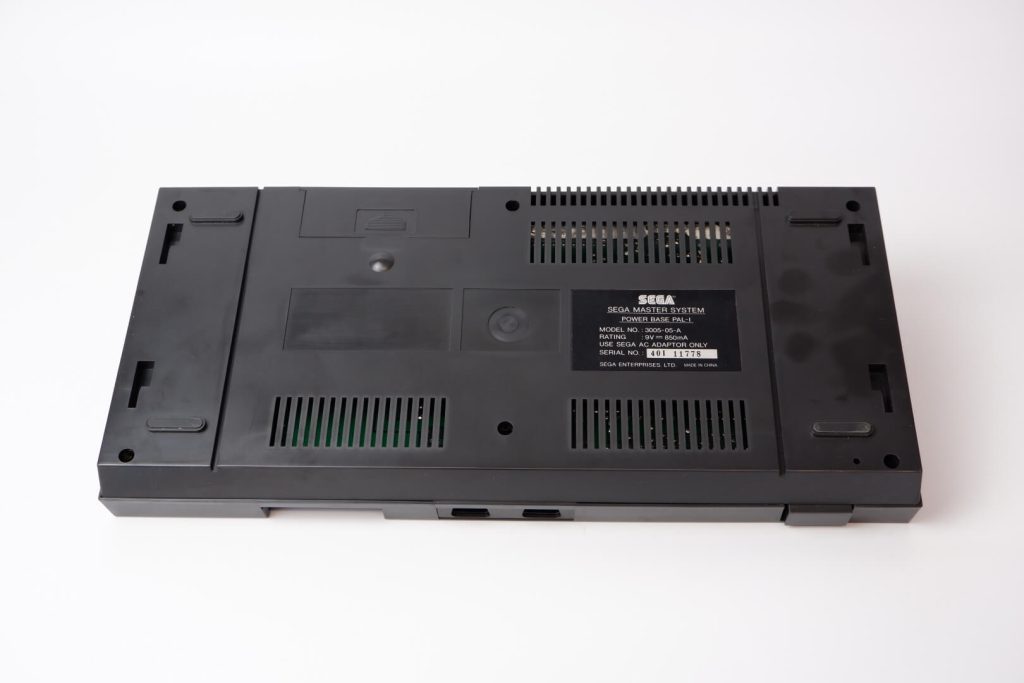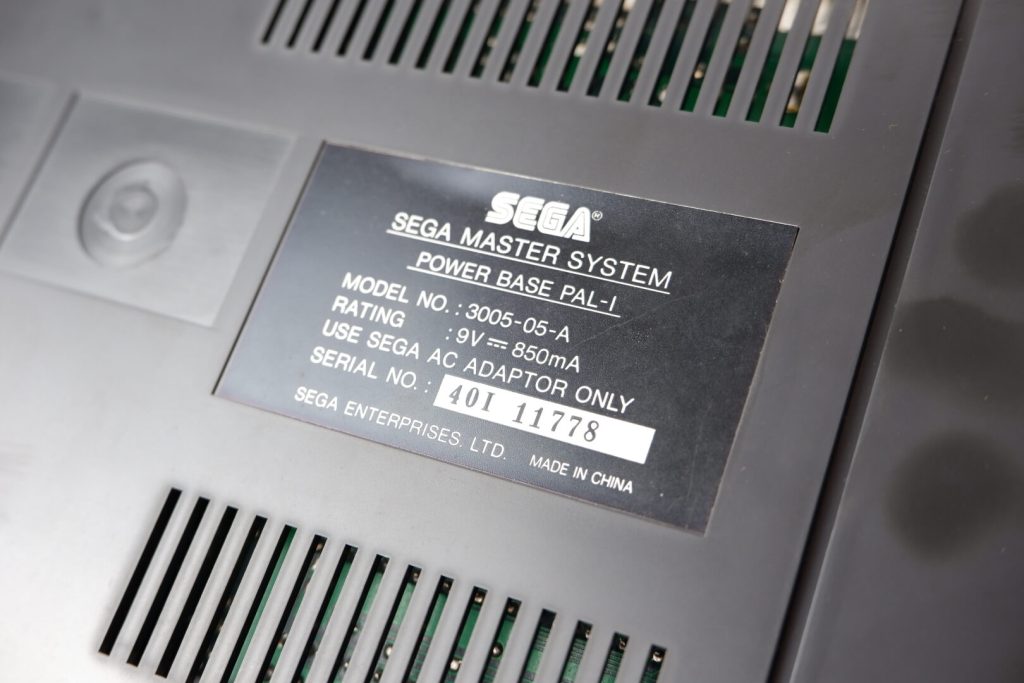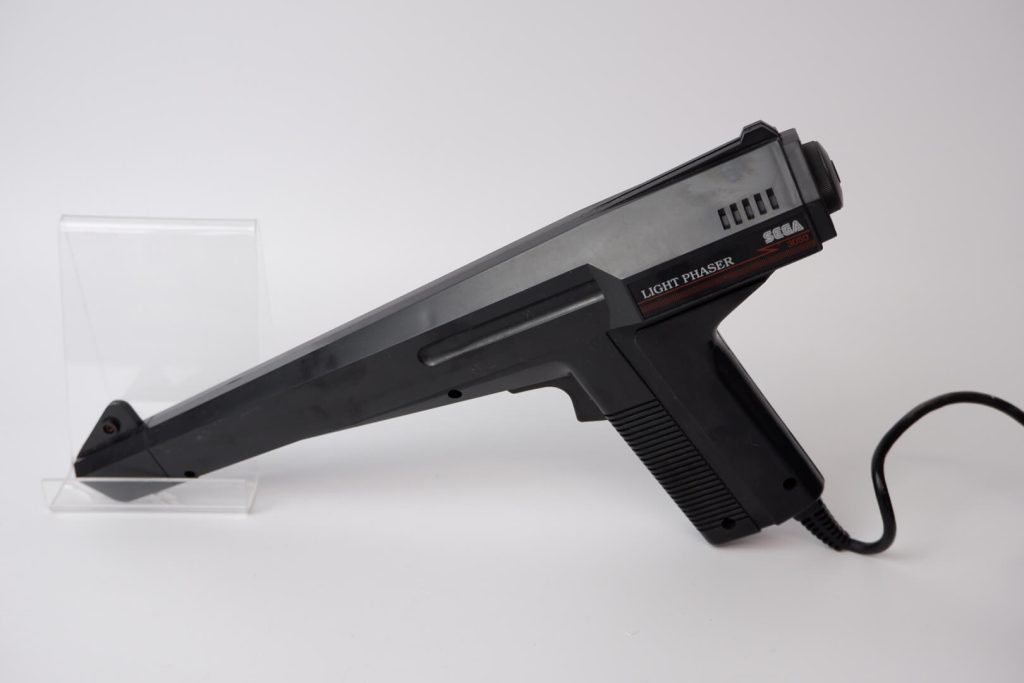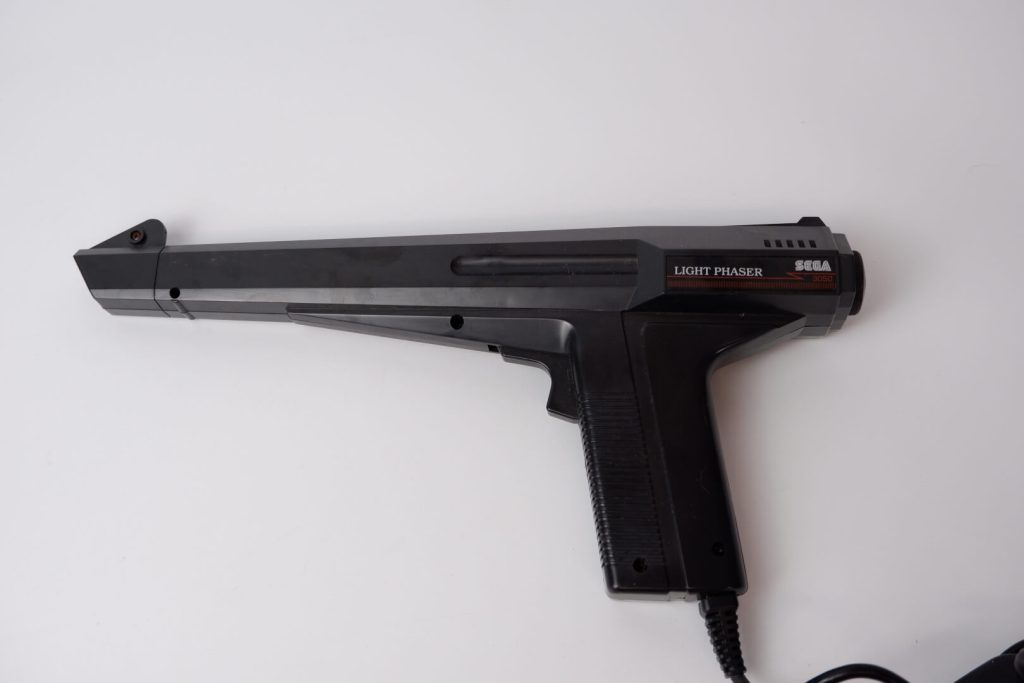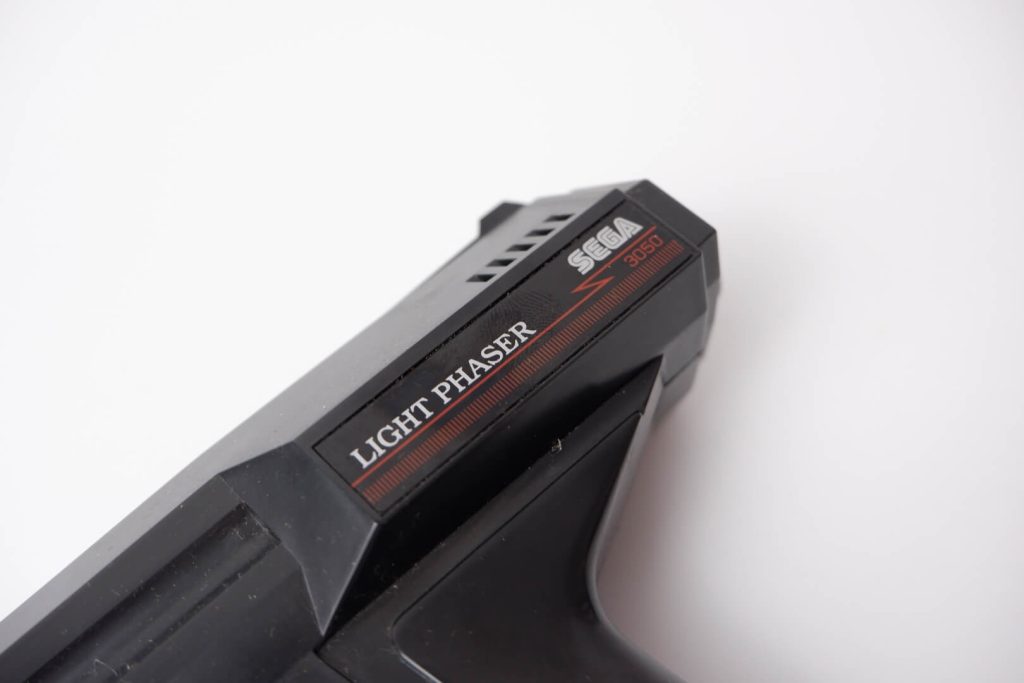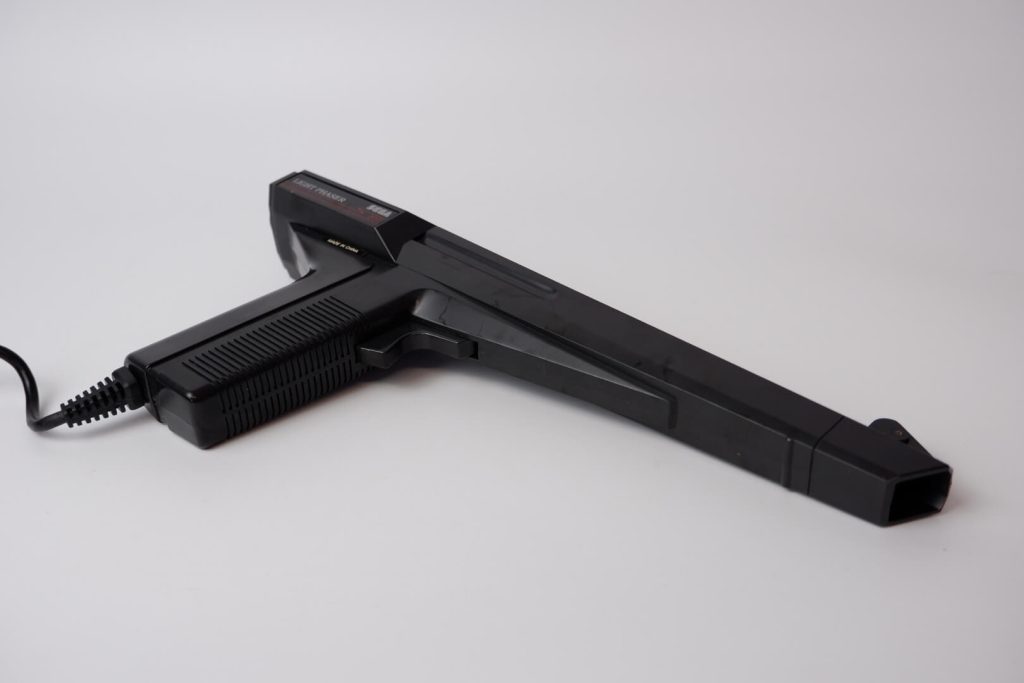Sega Master System (1986)
The Sega Master System 1 emerged from Sega’s earlier foray into the home console market with the SG-1000 series. Initially released in Japan as the Mark III in 1985, it was redesigned and launched as the Master System in North America in 1986 and Europe in 1987. Facing stiff competition from the dominant Nintendo Entertainment System, particularly in North America and Japan, the Master System found greater success in Europe and especially Brazil, where it has enjoyed an exceptionally long lifespan, even continuing in production in various forms well into the 21st century.
The original Sega Master System, often referred to as the Master System 1, sported a distinctive and somewhat futuristic aesthetic for its time. It featured a predominantly black, oblong-shaped console body with sharp, angular lines, giving it a “faceted” or almost “stealthy” appearance. Red accents were strategically placed, most notably around the cartridge slot and the power button, providing a visual contrast to the black casing. On the front of the console, you’d find the power switch on the left, followed by two standard 9-pin controller ports, and to their right, a slot for the My Card game format. The overall look aimed for a modern, tech-forward feel, perhaps trying to differentiate itself from the more rectangular and arguably plainer design of its main competitor.
A notable design element was the inclusion of a diagram printed directly onto the console casing near the cartridge slot. This diagram illustrated the various components – the cartridge, the controllers, and the TV switch – as if providing a quick reference guide. The controllers that came with the Master System were black with a red directional pad and two red action buttons. Some early models of the controller featured a detachable thumbstick on the directional pad. Unlike many other consoles of the era, the Master System placed the pause button directly on the console itself, rather than on the controllers, which could sometimes lead to awkward pauses mid-game as players had to reach over to the unit.
The rear of the console housed the necessary ports for connectivity: a DC input for power, an RF output for connecting to older televisions, a channel select switch, and an AV output for higher-quality composite video connections on compatible TVs. Interestingly, the European models of the Master System 1 featured an amplified RGB output through a DIN connector, a feature not present in the North American versions, requiring a special SCART cable for RGB output on European televisions. Overall, the design of the Sega Master System 1 was a bold statement for its time, aiming for a sleek and modern look that stood out in the burgeoning home console market.
Technologically, the Master System was an 8-bit console powered by a Zilog Z80A processor. Its graphics were handled by a Video Display Processor (VDP) capable of displaying up to 32 simultaneous colours from a palette of 64, with a resolution of 256×192 pixels. The console supported both ROM cartridges for games and Sega Cards, a credit-card-sized media format. Peripherals such as a light gun and 3D glasses (for specific games) further expanded its capabilities.
Despite not achieving the same level of global dominance as its main competitor, the Sega Master System left a significant legacy. It introduced many players to memorable games and characters, some of which, like Alex Kidd, briefly served as Sega’s mascot before the arrival of Sonic the Hedgehog. The Master System boasted a respectable library of arcade ports and original titles, showcasing impressive graphics and gameplay for its time. Its success in Europe provided Sega with a crucial foothold in the console market outside of North America and Japan. Furthermore, its remarkable longevity in Brazil cemented its place as a beloved and enduring piece of video game history, demonstrating the varied paths and lasting impact a console can have across different regions.
This is the “Plus” version of the Master system, that includes the console, two controllers and the light phaser.
| Boxed With Insert, No Manual |
| Sega Master System Plus | |
| 2x Controllers, Light Phaser, RF Cable, Power Cable | |
| £152.00 | |
| Poor Condition Box |

